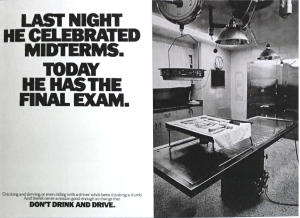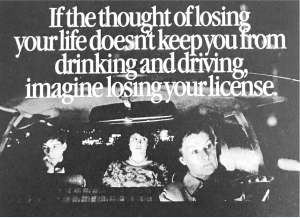Food for thought
In order for the campaign to reach consumers and activate them to actually do something, both Strategy and Execution must be equally strong and connect with each other.
The fundamentals of a campaign are:
- Strategy
- Creative
Strategy = the what to say
Execution = how it’s said (the Creative)
As every Strategist knows, there are many, many ways to reach a consumer. The trick is to choose the right one at the right time. How do you know which strategy will be most effective? You don’t, until you do.
To craft an effective strategy, you need to:
- Do your research
- Identify potential problems & opportunities
- Narrow your focus to a specific consumer
- Figure out what their current perception of the product/service is
- Discover what’s in it for them (insight)
- Articulate how to shift them to a new reality
- Test your proposed strategy
Strategies are usually developed by Strategists – whether at the ad agency or the brand (client). In this class, you’re also playing the role of Strategist. Doing so will help you understand how strategies are developed and will make it easier to work with Strategists in the future because you’ll have a better idea of how they do what they do.
One of the first things to understand about developing a Strategy is that Strategy is a choice. In other words, you can have the same problem/barrier to overcome, the same consumer, and the same amount of money to reach them – yet come up with different strategies that are the solution to the problem. Here’s an example:
Imagine your agency has been tasked with developing a campaign that can help reduce the number of lives lost due to drinking and driving. The research clearly shows that young people between the ages of 16-25 are 10 times more likely to die behind the wheel when they’ve had a few drinks. How do you convince young people that they shouldn’t drive if they’ve been drinking alcohol?
Strategy Number One
What’s the perception of young drivers? It turns out many of them think that the potential consequences of drinking and driving are over dramatized by old people who are scared of their own shadow. How do you change this perception?
By creating a new Reality that demonstrates exactly how dire the consequences can be. That new Reality: If you drink and drive, you could die.
So let’s call Strategy Number One – Drink, drive, die. The ad below brings the strategy to life by pairing a shocking image with a headline that uses innocuous language the average college student is familiar with. What we see is a coroner’s office, with the implication being that the student in question is about to have an autopsy performed on them. Does it get the idea across? Yes. Does it stop and make them think? Undoubtedly. Is it effective? Absolutely not.

When this ad was shared in focus groups with college students, they were momentarily taken aback. But ultimately, they viewed the grim ad as a scare tactic and said they wouldn’t change their behavior as a result of seeing it. Deeper discussion revealed an important insight the Strategist missed: the young people who took part in the research simply couldn’t imagine themselves dying. Because when you’re young, you feel immortal. Death is something that only happens to old people. So while this strategy might seem like a winner on paper, in real life, it has virtually no impact.
Strategy Number Two
Like I said, Strategy is a choice. Through additional research, the Strategists found out that there are other ways to change young peoples’ perception of the consequences of drinking and driving. It turns out that for young people, there’s one thing they value above all when it comes to driving: their independence. Getting a driver’s license means having the ability to come and go – to go where you want, with whoever you want, whenever you want. A driver’s license is FREEDOM.
So the ad below is based on the strategy of letting young people know that if they drink and drive and get caught, they could lose their license – and their FREEDOM. This is an old ad, with dated art direction. But the strategy is much more effective. It helps young people understand that if they drink and drive, they could be trapped in a living hell – where they have to rely on their parents to take them everywhere.

This is the ad that got young peoples’ attention and made more of them consider changing their behavior.
More recent Drinking and Driving ads: https://thirdeyemalta.com/top-10-dont-drink-and-drive-ads/
So when you’re working on Poo-Pourri or any brand, keep in mind that there is more than 1 Strategy option. Your job is to find the one that is most likely to convince your consumer to shift their perception because there’s something new you tell/show them that shifts them to a new reality that matters to them.
Key Takeaways
Strategy = the what to say
Execution = how it’s said (the Creative)
Strategy and Creative are equally important
Strategy is a choice – one that you must make carefully
